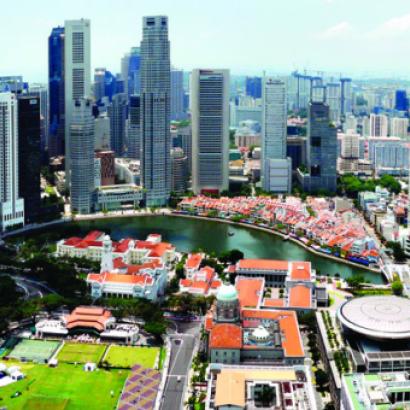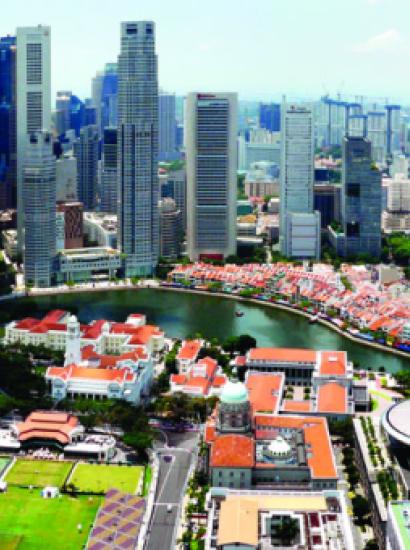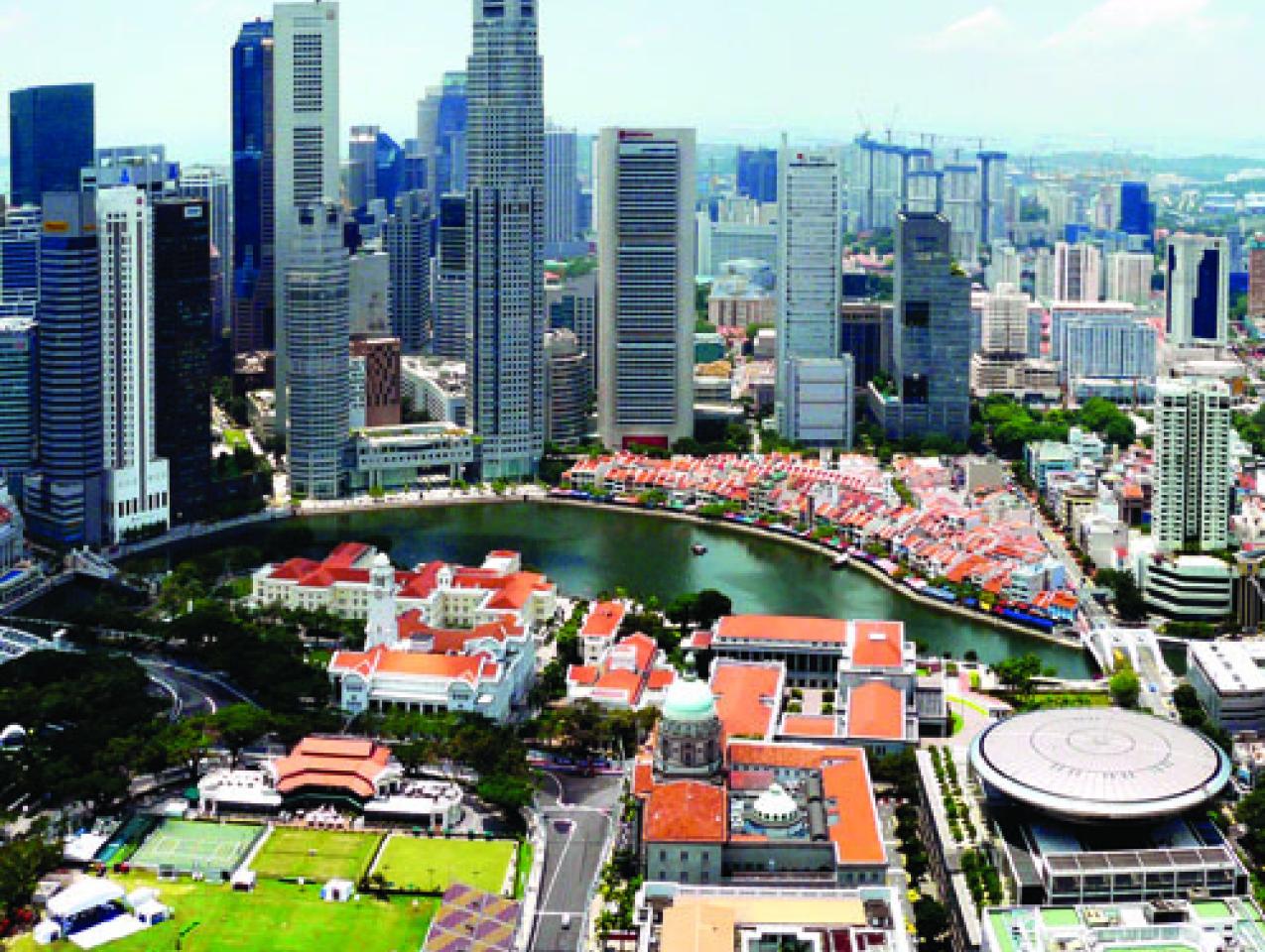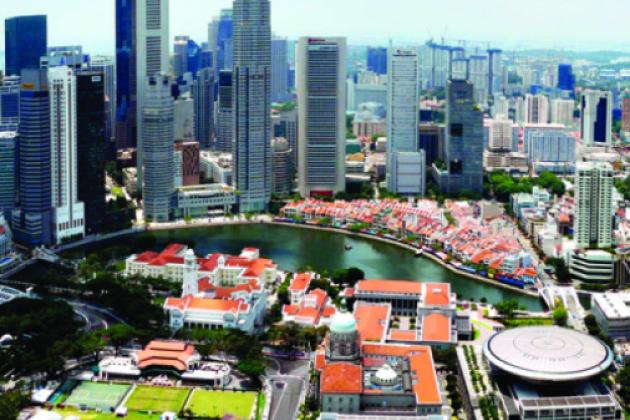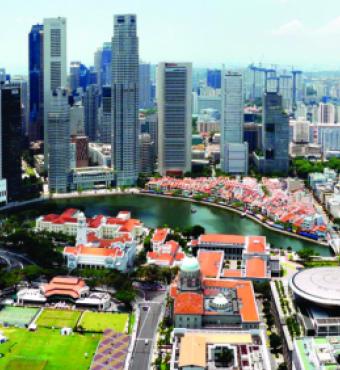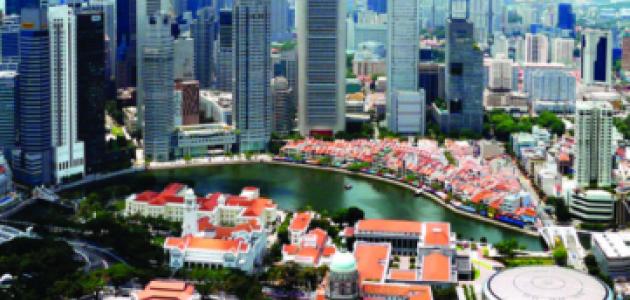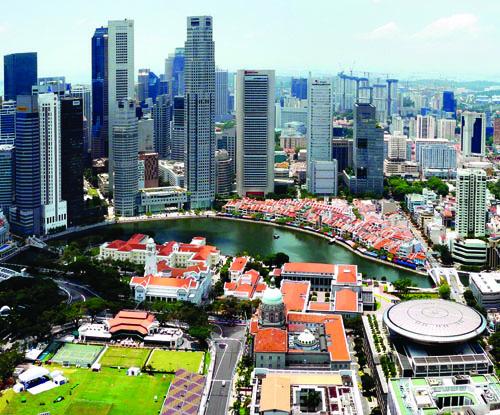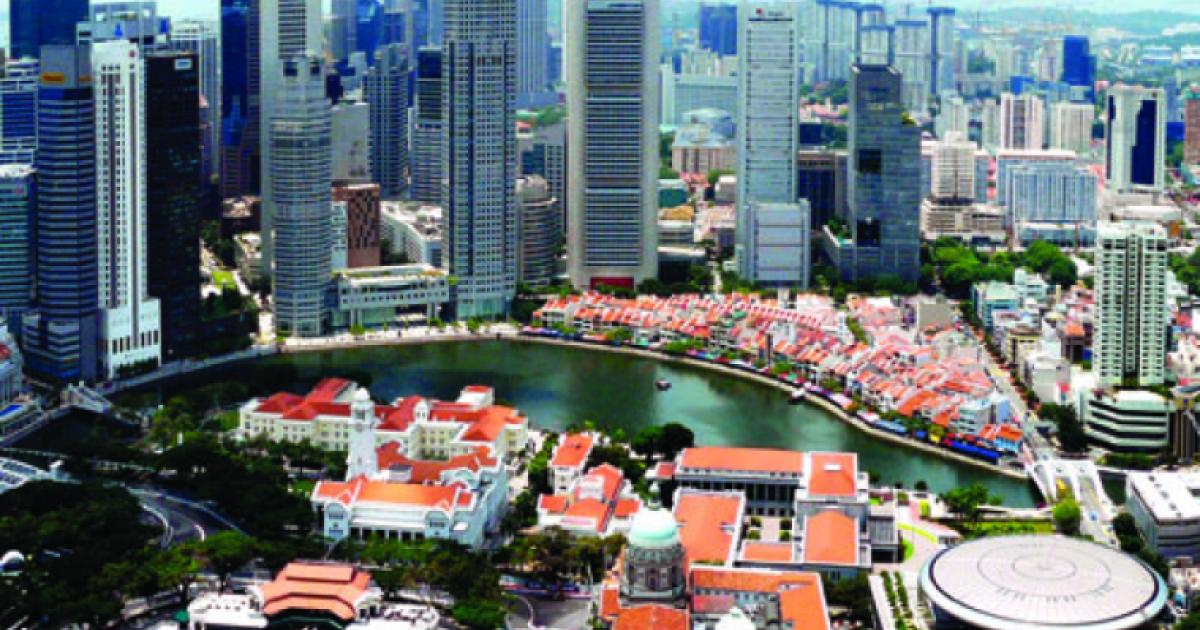- Economics
- Law & Policy
- Regulation & Property Rights
- US Labor Market
- Education
- International Affairs
- Economic
- Contemporary
- World
- US Foreign Policy
- Politics, Institutions, and Public Opinion
- Civil Rights & Race
- History
It took only a few weeks for the “Arab spring” to oust or threaten several perennial strongmen and to leave authoritarian and proto-authoritarian leaders as far away as China and Nicaragua scrambling to fortify domestic security. The political tsunami that began in Tunisia and Egypt—and then washed over Libya, Yemen, Syria, and elsewhere—was precipitated by outspoken demonstrators demanding greater freedom, dignity, democracy, and better living conditions for the poor and repressed. Compelling objectives all, and goals endorsed by the five-part Arab Human Development Report (AHDR) sponsored by the United Nations Development Program (UNDP) between 2002 and 2009. But they will not be easily realized.
The would-be democratizers must confront above all the potential barrier of culture—broadly defined as the values, beliefs, habits, commitments, and passions shared by and guiding the actions of most (or the most powerful) members of a society and its institutions. “Culture and values are the soul of development,” notes the crisis-defining 2002 report. “They provide its impetus, facilitate the means needed to further it, and substantially define people’s vision of its purposes and ends.”
The hope, humiliation, and rage evident in so much of the Arab/Islamic world today are faces of a culture, a religion, and a region once in the vanguard of world civilizations—in science, artistic creativity, relative tolerance, economic development, and magnificence—but which over the centuries fell farther and farther behind the world’s most dynamic modernizing nations and cultures.
A similar decline occurred in East Asia during recent centuries but was reversed, step by step, by Japan in the nineteenth century and the Asian “tigers” after World War II. These nations were led by the most successful leaders in the so-called developing world over the past half century. Within that era the tigers—Japan, South Korea, Taiwan, and Singapore—leaped over all other developing countries to join the developed world. Mostly, their leaders exploited positive and overcame negative aspects of Sinic (traditionally Chinese) culture and moved on to preside over quite balanced and productive political and economic reforms and nations. (To be sure, the Sinic culture also provided a twisted legitimization of power run amok in the cases of megalomaniacs Mao Zedong and Kim Jong Il.)
Take just two of many possible comparisons of the Asian and Arab/Muslim worlds. In 1960, South Korea’s per-capita GDP was almost the same as Egypt’s and well below Syria’s. Just fifty years later, South Korea’s was five times Egypt’s and six times Syria’s. Or simply go to Seoul, Cairo, and Damascus and look around. Why the stark difference? In this spirit, as Middle East historian Bernard Lewis noted in his book What Went Wrong?, “The rise of Japan had been an encouragement [to the Arab/Muslim world], but also a reproach. The later rise of other new Asian economic powers brought only reproach.”
CONDITIONS, CHALLENGES, AND RED HERRINGS
The AHDR of 2002 described many of the fundamental conditions and challenges in the Arab world that remain today. Its sobering assessments were drawn up by more than a hundred Arab scholars and experts, the first four reports under lead author Egyptian Nader Fergany. It stressed that “success in meeting today’s challenges will depend on the ability to shape, and adapt to, the demands of the new economics and the new politics.” The Arab world generally has failed to do this. Much of the explanation has been that “traditional culture and values, including traditional Arab culture and values, can be at odds with those of the globalizing world.”
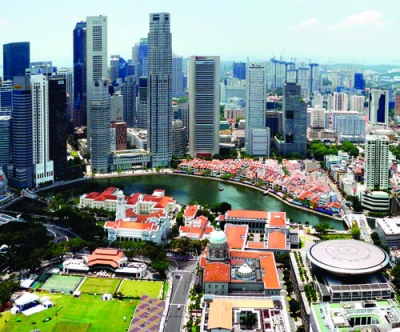
In her foreword to the 2002 report, Rima Khalaf Hunaidi, the Jordanian director of the UNDP’s Regional Bureau for Arab States, concluded that “the predominant characteristic of the current Arab reality seems to be the existence of deeply rooted shortcomings [that] . . . pose serious obstacles to human development.” In November 2006 Fergany wrote that the “acute, complex, and multifaceted” Arab crisis can be resolved only with “reforms touching almost all aspects of Arab society—cultural constructs, social and economic systems, and above all the political structures at the national, regional, and global scales.”
In recent decades, Arab leaders have generally ranged from inadequate to thuggish. But Muammar Gadhafi, Hosni Mubarak, and other Middle Eastern strongmen did not create the conditions that both enabled them to take power and dragged the region ever farther behind the West—and more recently the East—in serving their people’s political, economic, and other needs. (Though I will not develop this important line of thinking, for many in Arab or Islamic countries modernization and those who support it are themselves the problem.)
However bad an individual dictator or elite may be, all are better seen as symptoms of intrinsic problems—here, often derived from tradition but often worsened by modernization—rather than primary causes of national and regional woes. Of course, bad leaders are demonized during uprisings, since focused hatred rallies opposition. But the fact that so many activists and analysts in the Arab world and beyond so personify the problem, and speak so glibly of their goals, also suggests a failure to grasp the depth of the challenge. The difficulty in making real change after a dictator is removed should begin to bring that lesson home, but it may just stoke further frustration that will encourage more and perhaps escalating protests and repression, with activists in some degree successful or more often giving up or turning to more extreme pseudo-solutions.
CULTURE MATTERS, BUT IT CAN CHANGE
Many Arab demonstrators have spoken hopefully of democracy, before and after overthrowing a dictator, but democracy is a system not effectively adopted without significant cultural congruity. Historically the Muslim world has had little experience with democracy but has relied on consultation to check the power of rulers and get things done. Bernard Lewis told the Wall Street Journal in April that “to lay the stress all the time on . . . parliamentary Western-style elections is a dangerous delusion.” That is, truly responsive democracy will not open the door to a balanced and productive modern society if the traditional cultural and institutional obstacles to change and political and economic development remain largely in place. The March referendum in Egypt, for example, suggested that voting there after Mubarak’s ouster may not support the stated goals of the most vocal Tahrir Square activists but rather those of the more conservative and better-organized religious groups.
Latin America shows how difficult it can be to create democracies that serve popular needs, even in a region with its own branch of Western tradition. Costa Rican Nobel laureate Oscar Arias recently wrote in Foreign Affairs that Latin Americans have been flirting with democracy for two hundred years but most democracies there are still “fragile.” Moreover, the region remains remarkable internationally for its very high levels of poverty and inequality. Mindset plays its part. Lawrence Harrison’s first book on the impact of culture on reform, based on the author’s experiences as a USAID official handing out U.S. money in Latin America, was titled Underdevelopment Is a State of Mind.
Specific issues inhibiting Arab world modernization, of varying impact around the region, have been building for centuries or are recently arrived and often are quite contrary to earlier culture. Just a few of these are: profound differences over what ultimate goals should be and intolerance of those who think differently; widespread ignorance of what constitutes modernization, including what democracy is and how it works; a paucity of wise and capable leaders to rally and lead constructive and peaceful change; a tilt toward authoritarian leadership and obedience, originating in the family and reaching to the highest levels of clan and nation; the exclusion of half the population—women—from active involvement outside the home; inattention to serious modern education resulting in widespread ignorance, unskilled labor forces, and unemployment within a rapidly growing population; the inability to creatively develop modern activities and institutions; a strong tendency to seek scapegoats for personal and group failures, these often linked to extreme and intolerant branches of Islam; an inclination toward paternalism rather than legally protected private economic initiative; and impatience. Former Peruvian president Alberto Fujimori, of Japanese heritage, once told me that when it comes to reforms, Asians are more patient than Latins. And Arabs.
Unlike the AHDR authors, many political leaders, scholars, and pundits worldwide tend to dismiss analyses highlighting the impact of culture. In part this is because, as Harvard historian David Landes has written, “criticisms of culture cut close to the ego and injure identity and self-esteem.” Most economists are inclined to look askance at culture as a major factor in economic affairs because claims for its role are “difficult to test.” True, and there are similar problems trying to measure the impact of ambition, vengeance, loyalty, and adherence to ideologies or religions, which in varying ways constitute culture. Nonetheless, singly or in combination, these often have a far greater impact on economic and other decisions and actions by an individual or government than mountains of economic experience and empirical data. We must try to weigh them. Last year, for instance, an econometric study in American Economic Journal: Macroeconomics concluded that parts of Chinese tradition were critical to enabling the tigers to join the First World. Traditional thinking and practices, the study showed, were used to implement lessons from the West.
TIGER COUNTRIES, TIGER MOTHERS
The experiences of the Asian tigers offer impressive evidence that profound change is possible if two primary criteria are met:
Adopting productive economic policies and putting them into action. Other so-called developing countries could have followed this course but chose not to.
Culture. Specifically, the noneconomic common denominator of all poor nations that jumped into the developed world, an ingredient absent from all countries that did not (save two), was Sinic culture.
The two exceptions are China, the mother lode of Sinic culture, and Vietnam, one of China’s oldest disciples, which have yet to join the developed world. Their lag is due to many factors, prominent among them some lingering negative aspects of Sinic culture—now fortified by aspects of “Marxism”—including authoritarianism and a paternalism that still stifle much individual initiative. (This state role was seemingly legitimized for many in the developing world by the recent U.S.-sparked global financial crisis.) But China’s economic growth has been so spectacular—and China is so huge, with rapidly expanding global links—that for many China, rather than the tiger countries, has become the Asian inspiration and development model.
Among the cultural factors in the Sinic world that are absent or less powerful in the Arab world and in other developing countries are certain convictions: education is an expressway to success for nations and individuals; goals should be high and pursued over the long haul with both single-minded diligence and a vigorous work ethic; merit should be sought out and rewarded; and frugality and clear focus must guide the spending of money and energy. These have long been noted in various ways by Sinologists Edwin Reischauer, Lucian Pye, William Theodore de Bary, and Hoover senior fellows Ramon Myers and Thomas Metzger, among others.
In fact, just as the Arab world was coming unhinged in early 2011, Yale Law School professor Amy Chua caused a riot in pedagogical and parenting communities with her memoir Battle Hymn of the Tiger Mother. Never even mentioned during the controversy over Chua’s book about raising two daughters was her unstated subtext: that the Sinic “tiger mother” was one of the critical factors in the explosive modernization of East Asia over the past half century.
Of course, Chinese mothering is a misnomer, as Chua herself insists, for “tigering” can be done by individuals or groups of any ethnicity, sex, age, or historical period. It is a matter of strictly implementing a demanding educational or cultural curriculum. Thus the protagonists of Max Weber’s much-remarked-upon Protestant ethic were in important respects tiger mothers. Ditto many Jews, Basques, Koreans, Scandinavians, and Americans. Indeed, jousting with TV comic Stephen Colbert on his program, Chua noted that her tiger approach often reflects the most basic of traditional American values: “hard work, don’t blame others, and don’t give up.”
Hopes for major reform in the Arab world are welcome, and a more representative, democratic leadership there is possible, though prospects should come with a strong dose of caution. Real increases in freedom and economic development, sought by so many activists, will be possible only if leaders and people are united and fully committed to bringing them about through a less paternalistic, and more individual, initiative-friendly culture. Early explosive enthusiasm must be focused on productive programs and the long term if the Arab peoples want to improve their living standards and perhaps even join the developed world. For inspiration they may look in part to today’s tigers or find models among any of history’s more progress-inclined cultures, including their own some centuries ago. Reform will be most secure if it blends modern aspirations and institutions with the most progressive aspects of the Arabs’ own tradition.








